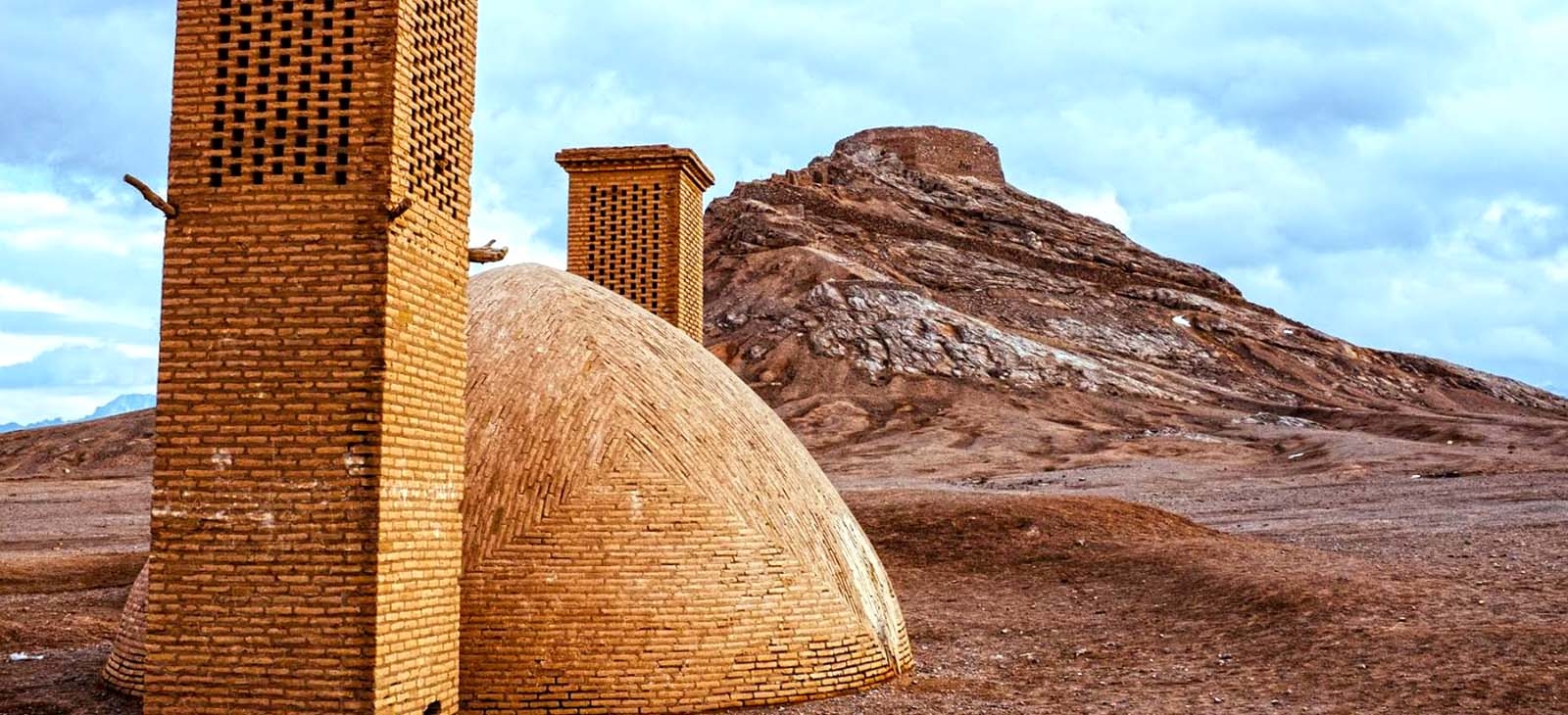There are several disused towers of silence, dakhma, in the vicinity of Yazd city. All are on top of small hillocks. The better known of the set are a pair just south of the city in Safaieh district.
There are several disused towers of silence, dakhma, in the vicinity of Yazd city. All are on top of small hillocks. The better known of the set are a pair just south of the city in Safaieh district. Towers of silence, or dakhmas, are squat circular walled stone structures, inside which bodies of the deceased are exposed to birds who eat the flesh. The bones that remain after the flesh is consumed, are dried and bleached by the sun. Coining of the term 'tower of silence' is attributed to Robert Murphy, who, in 1832, was a translator of the British colonial government in India.
Two hilltop towers overlook the Iranian city of Yazd, their simple cylindrical walls giving no indication of the gruesome scenes that once took place within them. The structures are known as dakhma, or towers of silence. The Zoroastrians of Yazd used these places as open burial pits, placing their deceased relatives in rows so their bodies would be feasted upon by birds of prey. Sky burial—placing a deceased human body in an exposed location so that animals and the elements will hasten its decomposition—has long been a part of Zoroastrian tradition. According to the religion’s beliefs, a body becomes impure at death, when evil spirits, or nasu, arrive to attack the flesh and soul of the deceased. By contaminating the corpse, nasu also threaten the living. Sky burial is considered a clean death because it prevents putrefaction—birds of prey such as vultures can eat a body down to the bones in just a few hours.
Although the towers date back to the nineteenth century and are influenced by the practices of Indian Zoroastrians, the custom to expose the dead on towers is mentioned in the late Sasanian age

